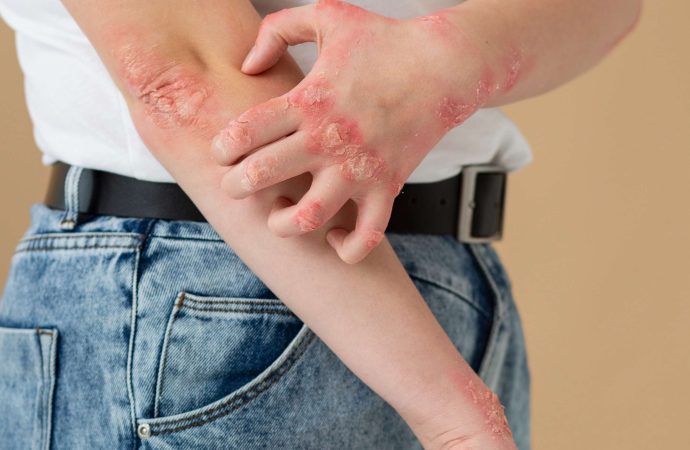What Is Filariasis? Filariasis is a neglected tropical disease caused by thread-like parasitic roundworms known as filarial worms. These worms are transmitted to humans through mosquito bites. Once inside the body, the larvae migrate to the lymphatic system and mature into adult worms, causing blockages and inflammation. Over time, this leads to serious conditions such
What Is Filariasis?
Filariasis is a neglected tropical disease caused by thread-like parasitic roundworms known as filarial worms. These worms are transmitted to humans through mosquito bites. Once inside the body, the larvae migrate to the lymphatic system and mature into adult worms, causing blockages and inflammation. Over time, this leads to serious conditions such as lymphatic filariasis, also known as elephantiasis, where limbs become swollen and thickened due to lymphatic dysfunction.
Types of Filariasis
There are three major forms of filariasis that affect humans:
-
Lymphatic Filariasis – Caused by Wuchereria bancrofti, Brugia malayi, and Brugia timori.
-
Subcutaneous Filariasis – Involves the skin and eyes, caused by Loa loa, Mansonella streptocerca, etc.
-
Serous Cavity Filariasis – Involves body cavities, usually asymptomatic.
Among these, lymphatic filariasis is the most commonly diagnosed and the most debilitating form.
Filariasis in the USA: Is It a Concern?
While filariasis is not endemic to the United States, cases do occur due to:
-
International travel to endemic regions (Africa, Southeast Asia, India, the Pacific Islands)
-
Immigration from countries where filariasis is prevalent
-
Military deployments in tropical regions
-
Climate changes affecting mosquito populations
Though the risk is relatively low, healthcare professionals in the USA should maintain awareness, especially when treating patients with recent travel history or unexplained lymphatic swelling.
Causes and Transmission
Filariasis is caused by parasitic filarial worms transmitted via mosquito vectors. The life cycle of the parasite involves:
-
Mosquito bites an infected person, ingesting microfilariae (immature larvae).
-
The microfilariae develop into infective larvae within the mosquito.
-
When the mosquito bites another person, the larvae are transmitted through the skin.
-
The larvae migrate to the lymphatic system, mature into adult worms, and start reproducing.
Mosquito species that spread filarial worms include Culex, Anopheles, Aedes, and Mansonia.
Symptoms of Filariasis
Symptoms vary depending on the type and severity of the infection:
Acute Symptoms:
-
Fever
-
Chills
-
Lymph node swelling
-
Skin rashes
-
Pain in limbs or genital area
Chronic Symptoms (usually seen after years of infection):
-
Lymphedema (swelling of arms, legs, breasts)
-
Elephantiasis (thickening and hardening of skin)
-
Hydrocele (swelling of the scrotum)
-
Disability and social stigma
Asymptomatic infections are also common and may still cause damage to the lymphatic system and kidneys.
Diagnosis of Filariasis
In the USA, where cases are rare, proper diagnosis is essential and usually involves:
-
Microscopic detection of microfilariae in blood samples (collected at night)
-
Antigen detection tests for Wuchereria bancrofti
-
Ultrasound imaging to detect adult worms in lymphatic vessels
-
Serological and PCR tests for more accurate identification
Travel history and clinical presentation are important diagnostic clues.
Treatment Options for Filariasis
Early treatment can prevent the progression to chronic disability. The primary goals of treatment include:
-
Killing microfilariae and adult worms
-
Managing symptoms and secondary infections
-
Preventing transmission to others
Ivercor 6mg: A Frontline Medication
Ivercor 6mg is a tablet formulation of Ivermectin, a widely used antiparasitic medication. It is effective in killing microfilariae, thereby interrupting transmission.
How Ivercor 6mg Works
Ivercor 6mg works by:
-
Paralyzing the nervous system of the parasites
-
Causing their death
-
Reducing the microfilarial load in the blood
It is especially useful in combination therapy with other drugs such as Albendazole and Diethylcarbamazine (DEC) for more complete treatment.
Recommended Dosage
-
The standard dose is Ivercor 6mg once or twice annually, depending on the severity and presence of co-infections.
-
In community mass drug administration (MDA) programs, Ivermectin is used to eliminate microfilariae and prevent spread.
-
For individual treatment in the USA, dosage is tailored based on body weight and lab findings, usually supervised by an infectious disease specialist.
Note: Always consult a healthcare provider before taking Ivercor 6mg. Self-medication can lead to serious side effects, especially in people with co-infections like Loa loa.
Side Effects of Ivercor 6mg
Ivercor 6mg is generally well-tolerated but may cause mild side effects, especially as the body reacts to dying parasites. These include:
-
Fever
-
Headache
-
Dizziness
-
Muscle aches
-
Skin rashes
-
Nausea
In rare cases, severe allergic reactions or neurological effects can occur, particularly in patients with Loa loa infection.
Other Medications Used in Treatment
-
Diethylcarbamazine (DEC): Kills both adult worms and microfilariae.
-
Albendazole: Enhances the efficacy of Ivermectin and DEC.
-
Antibiotics (e.g., Doxycycline): Target the Wolbachia bacteria that live symbiotically with filarial worms, weakening the worms and reducing disease severity.
Prevention Strategies
Personal Protection:
-
Use insect repellents
-
Wear long-sleeved clothing
-
Sleep under mosquito nets
-
Avoid traveling to endemic areas without precautions
Community-Level Interventions:
-
Mass Drug Administration (MDA) programs in endemic countries help reduce the prevalence.
-
Vector control through mosquito breeding site reduction, larvicides, and public health education.
Travel Advice for Americans:
-
Take prophylactic antiparasitic medications if advised
-
Be alert to symptoms after returning from tropical regions
-
Seek medical care for persistent swelling or fever
Living with Filariasis: Support and Management
For those with chronic lymphatic damage:
-
Lymphedema management (compression garments, exercise)
-
Surgical options for hydrocele or severe elephantiasis
-
Counseling and community support to manage the psychological and social impact
Conclusion
Although filariasis is rare in the United States, it remains a potential threat due to global travel and immigration. Early diagnosis and treatment are critical to avoid complications. Ivercor 6mg (Ivermectin) plays a pivotal role in both treatment and prevention. When used responsibly and under medical supervision, it can help control the spread of the disease and improve the quality of life for those affected.
Healthcare professionals should maintain a high index of suspicion in patients presenting with compatible symptoms and travel history. Public health officials must stay informed and ready to manage imported cases Read More.
FAQs About Filariasis and Ivercor 6mg
1. Can Ivercor 6mg cure filariasis completely?
Ivercor 6mg helps eliminate microfilariae and reduce symptoms. However, complete eradication may require combination therapy and long-term follow-up.
2. Is Ivercor 6mg safe for children and pregnant women?
Ivercor is generally avoided in children under 5 and during pregnancy unless the benefits outweigh the risks. Always consult a doctor.
3. Where can I buy Ivercor 6mg in the USA?
Ivercor 6mg is available via prescription and some international pharmacies. Online platforms may offer it under proper regulations. Ensure authenticity before purchasing.
4. How long does it take for Ivercor to show results?
Improvement may begin within a few days, but full benefits and eradication can take weeks or months depending on disease severity.
Final Thoughts
Filariasis may be uncommon in the USA, but global interconnectedness means no region is completely immune. Understanding the causes, symptoms, and treatment—especially the role of Ivercor 6mg—is key to early intervention and improved outcomes. Whether you’re a traveler, clinician, or simply health-conscious, staying informed is your best defense.
















